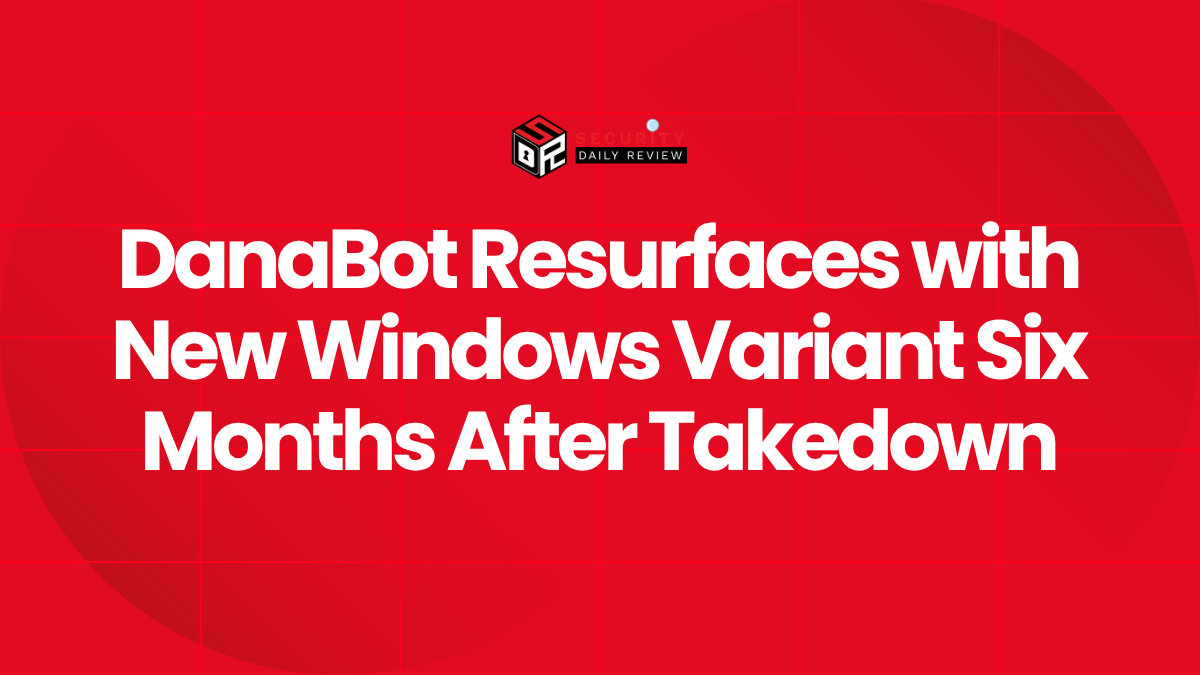DanaBot, a seasoned malware-as-a-service (MaaS) operation, has resurfaced after a six-month dormancy following its disruption in May during the law enforcement-led Operation Endgame. The threat actor behind DanaBot has now released version 669, a renewed attempt to distribute malicious payloads to Windows users, according to an analysis from Zscaler’s ThreatLabz.
This comeback signals a potential reorganization or tooling upgrade by the malware’s operators, who remained silent throughout the second half of 2025. Security researchers analyzing this latest variant have highlighted significant technical changes in the malware’s stage-loading process and command-and-control (C2) infrastructure, suggesting that DanaBot’s developers are intent on regaining operational traction in the threat landscape.
Technical Evolution in DanaBot Version 669
The updated DanaBot malware demonstrates both continuity and change. Its core functionality remains geared toward credential theft, system profiling, and delivering additional payloads. However, security researchers observed altered behavior at multiple levels, marking a renewed sophistication in its deployment process.
New Loader and Staging Behavior
The most notable technical difference in version 669 is its redesigned multi-stage execution process. Zscaler reports that the updated first-stage loader in this version uses obfuscation techniques to evade detection and analysis.
Key behavior within the new variant includes:
- Deployment via spam email campaigns using malicious attachments or embedded links
- An initial loader that decodes and injects intermediate payloads into memory
- Final-stage DanaBot malware being delivered via reflective Dynamic-Link Library (DLL) injection
This loader architecture allows attackers to modularize deployment, making it easier to update or replace components independently and obscure the malware’s functionality until the final stage executes.
Static Indicators and Traffic Analysis
Researchers also identified a new set of static indicators unique to this variant. The malware’s binary components are encrypted and encoded differently than in previous versions. Also, domain generation algorithms (DGAs) used for C2 communication now leverage randomized strings which appear resilient to traditional signature-based detection.
Traffic analysis reveals that C2 servers for DanaBot version 669 are hosted on infrastructure that wasn’t previously associated with the botnet. Zscaler’s telemetry confirmed outbound connections to these new domains after initial infection, with the servers responding to check-in beacons and pushing dynamic payloads per infected host.
Operation Endgame’s Limited Reach
DanaBot’s reappearance highlights the limits of Operation Endgame, an international takedown operation in May that aimed to dismantle core malware-loading ecosystems. While the coordinated effort led to the temporary disruption of several loader operations—including DanaBot, IcedID, and Bumblebee—it now appears that DanaBot’s operators were only temporarily impeded.
Following the takedown, no significant DanaBot activity had been detected—until researchers intercepted version 669 in the wild. The timeline suggests the malware’s creators spent the latter half of 2025 refactoring code and rebuilding infrastructure, potentially to bypass countermeasures developed after the takedown.
Re-Emergence Raises Concerns
With its modular architecture and resilience to prior detection techniques, the new DanaBot variant poses a renewed threat to enterprise and individual Windows environments.
Cybersecurity teams should pay close attention to:
- Revised Indicators of Compromise (IOCs) related to version 669, including file hashes, C2 domain patterns, and behavioral signatures.
- Proactive detection of anomalies in user behavior or unrecognized DLL loads in memory.
- Blocking outbound DNS or HTTP/S requests to known DanaBot domain patterns using endpoint protection tools.
Given DanaBot’s past as a MaaS threat, it is also likely that cybercriminal clients will once again resume using it as a delivery mechanism for additional payloads including ransomware and information stealers. Threat actors value DanaBot’s efficiency in establishing footholds and facilitating post-exploitation stages.
Looking Ahead: Adaptation Over Elimination
DanaBot’s evolution underscores a broader trend in the cybercrime economy where takedowns, while effective in the short term, fail to permanently remove sophisticated actors from the ecosystem. Instead, threat actors often respond with architectural overhauls, better obfuscation, and ever-evolving infrastructures.
Security professionals must anticipate these reboots. The return of DanaBot highlights the importance of contextual threat intelligence, behavioral analytics, and a layered defense strategy. Technical indicators alone are fleeting; attackers’ agility requires defenders to be equally dynamic.
As version 669 makes its rounds in malware distribution campaigns, defenders who previously discounted DanaBot as neutralized must now re-engage with its IOCs and TTPs (tactics, techniques, and procedures). DanaBot is back—and likely refining its next moves.









